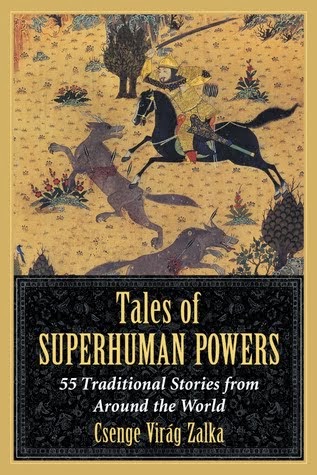This year, my A to Z Blogging Challenge theme is Romance Tropes in Folklore! For each letter, I will pick a popular trope from romcom movies and romance novels, and see if I can find the same trope in folktales and legends. Because it's fun. Here we go.
THE TROPE
Another enduring and very popular trope that has been the staple of romcom movies for decades. It features a drab or unattractive character (usually a girl) who goes unnoticed by the romantic interest until she is given a serious makeover: new hair, new makeup, new clothes, and suddenly she turns out to be very pretty indeed. We can argue about how valid or cringe this trope actually is (I am still not on board with this one), but it does happen quite a lot.
THE FOLKLORE
Yeah yeah, Cinderella is the most obvious choice. I wanted to venture a bit beyond that, though.
THE STORIES
Tattercoats (English folktale)
A rich lord has a granddaughter who dies in childbirth. In his grief, the lord abandons his granddaughter, who grows up dirty and neglected. Her only friend is the royal gooseherd. When news arrive what the king's son is set to choose a wife, the girl wants to go see the event. She sets out on foot, along with the gooseherd. As they walk, they are joined by a mysterous traveller, who soon falls for the girl. Of course the traveller is the prince himself, and when the ball starts, he declares that he wants the goose girl as a wife. In that moment, the gooseherd plays his flute, and the girl transforms into a shining princess in front of everyone's eyes. I like this tale because girl and prince fall in love before she actually turns pretty(er).
Tatterhood (Norwegian folktale)
A queen has twin daughters, one who is shy and pretty, and one who is born riding a goat, brandishing a wooden spoon, and looking terribly ugly. When witches curse the shy sister with a calf's head. Tatterhood doesn't let the thing stand, and sets out with her sister to break the curse. She fights a bunch of witches, and steals her sister's head back. Soon after, a king proposes to the pretty sister, but she insists that the prince should marry Tatterhood at the same time. On their way to the wedding, Tatterhood gradually transforms (on her own) from ragged girl to shining princess.
János Carnation-hair (Hungarian folktale)
You know the part in makeover movies where someone suffers from all the waxing and hair plucking and whatnot? Well, this story is worse. In it, a boy is given to his fairy godmother to be raised into a hero. She takes him to her underwater castle - where she cuts him into pieces and throws him in a tub. After three days she revives him, and he is bigger and stronger and more beautiful than before. She cuts him up again, and repeats the process three more times before he is ready to venture out and seek his fortune. (Read the Hungarian text here)
Sir Goldenhair (French-Canadian folktale)
This one is a version of tale type ATU 314 (Goldener). This type usually features a golden-haired hero who disguises himself with a wig and works as a gardener in a king's court. When no one sees him, he puts on various shining suits of armor (in this case white, red, and black) and rides out to go to church / court the princess / join the king in battle. In the end, his identity is revealed, but the crafty princess usually notices way before anybody else.
There is also a lovely Hungarian version where the hero travels to the Islands of the Dawn in the far west, and washes himself in a magic spring which turns his hair golden and his face radiantly beautiful.
The glimmering bird (Latvian folktale)
This one is also a common boy-makeover tale type: ATU 530 (Princess on the Glass Mountain). I especially like this version. In it a king captures a glimmering bird that keeps visiting his gardens. The bird turns out to be a small man, dressed in diamonds a glimmering feathers and other fancy things. The king's son feels sorry for the captive, befriends him, and sets him free. The small man takes the prince to his undergorund realm, and raises him. When the time comes to win a princess, the small man dresses the prince in diamonds too, so he can dazzle everyone. But after he wins the princess, he disguises himself as a vagabond, and serves in the king's court for a year, only revealing himself after. (I enjoy this version for the visuality of the glimmering dress and the underground realm. I like the "fairy godmother" role being filled by a flamboyant Dwarven king.)
In the Russian version of the same type, the hero Ivan the Fool inherits a magic horse from his father. Whent he time comes to win a princess, he transforms himself into a shining knight by crawling into one ear of the horse, and crawling out the other...
Do you have favorite romance stories that feature this trope?
Do you like the folktale versions?
Don't forget to leave a link in the comments so I can visit you back!













